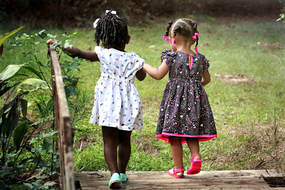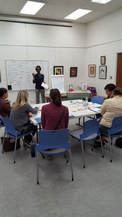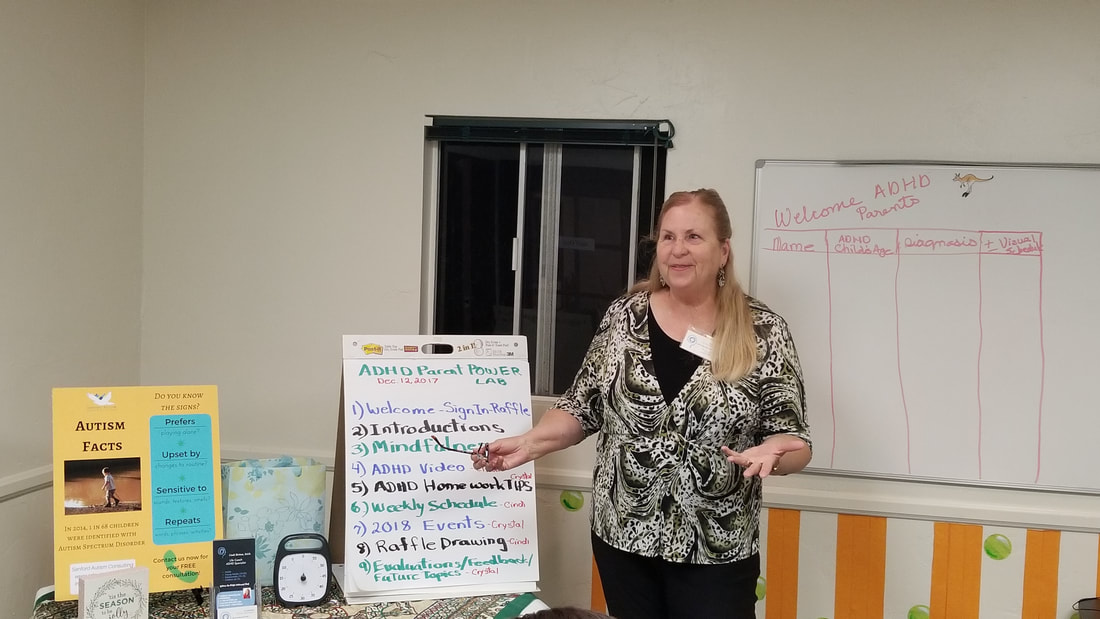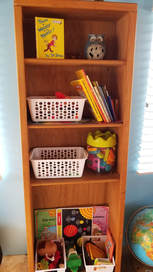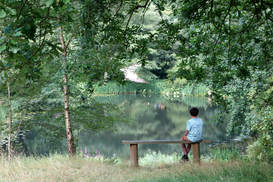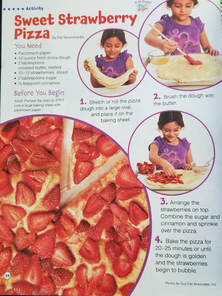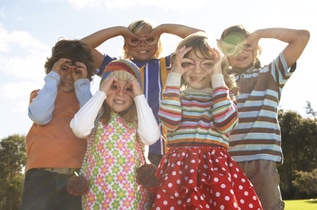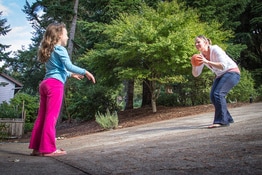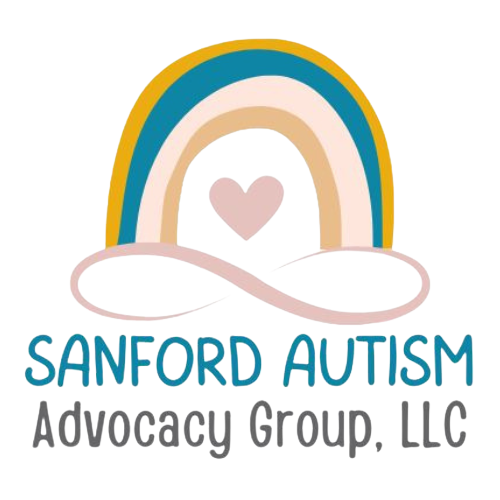|
2/7/2018 4 Comments Autism & FriendshipsThis month our focus is on improving various relationships impacted by Autism. One example is friendships. Starting and keeping friendships for our kids with Autism can be tough. Wondering about strategies to help?
1. Embrace Solitude: If your child falls anywhere on the Autism spectrum, then you are likely aware that they tend to be happiest when they are by themselves. As neuro-typicals, this may be hard for us to accept. However, it is vital to embrace this truth early on. It will decrease frustration and anxiety as we parent our child with their unique needs by honoring their need to be alone. This does not mean that we do not actively assist them in developing healthy relationships with others. However, this should relieve just a little bit of the pressure. 2. Structured Play Groups: These are small play groups supported by trained adults. The groups include children with and without Autism. All kids have the chance to practice good friendship skills (ex: sharing, turn-taking, etc.) in a natural environment. One example of this is Circle of Friends, a nationwide "school inclusion program that builds genuine friendships between students with special needs and their general education peers". I had the pleasure of starting a Circle of Friends chapter at a local high school many years ago and have done the same at a local middle school. The benefits seen by both children with and without special needs are priceless. You may consider talking to your child's school or special education team about starting a chapter at your school. 3. Video Modeling: As most of our children have a high interest in visuals, using videos to model and teach target behaviors (ex: greetings, playing a game, etc.) is an awesome strategy. Ideally, you should catch the moment and video your child when they are using the target behavior. Watching themselves in the video definitely helps to increase engagement. However, YouTube is also a great source for these videos that model positive friendship and social skills 4. Attend Local Events: Is your child with Autism really into Thomas the Train, dinosaurs, etc? Find local. small events at your neighborhood library, park or toy store where their passion is the theme. Your child will be able to engage with their peers and they will likely shine as the expert on the topic. This setting may also increase your child's motivation to engage with their peers since the topic is highly motivating. Another bonus: As a parent you may meet other like-minded parents and develop friendships of your own. Some San Diego resources include the San Diego Children's Museum and the Autism Tree Project Foundation. Friendships for our children with Autism may take effort, however learning and practicing key skills early on in a variety of environments may reap a lifetime of benefits. References: The Complete Guide to Asperger's Syndrome (Tony Attwood), AFIRM Modules
4 Comments
 So, are you one who still hasn’t developed goals for the New Year? Are you more focused on your child’s IEP goals with no time left to think about yourself or your family as a unit? Don’t worry, you are not alone. But, don’t give up, it’s not too late. Here are my tips for experiencing your best year yet! I warn you, these suggestions may surprise you as they have less to do with productivity and more to do with reducing stress and enjoying life’s journey. I believe that by focusing on increased laughter, sleep, and time outdoors in nature, we are giving our bodies space to refuel. As I have started becoming more intentional in each of these areas, I can attest that I feel happier and am more empowered for whatever comes my way as a wife, special needs parent, and business owner. So, let’s begin… 1. Laughter This month, I posted about the therapeutic benefits of laughter on my social media outlets. Why laughter? ~It stimulates many organs and increases endorphin release in your brain. This "feel good" chemical can help to improve your overall well-being and quality of life. Who doesn't need that? ~Laughter activates, and then cools down your stress response. This makes you feel relaxed for up to 45 minutes after a good laugh. ~Laughter stops distressing emotions. You can't be depressed or angry and laugh at the same time. So, the next time you get down in the dumps about your life or your child's situation, think about something funny that your child did or said and laugh! Laughter also has the ability to strengthen relationships, enhance teamwork and diffuse conflicts. All of these are welcomed in our home, how about you? 2. Sleep The National Sleep Foundation (NSF) set new recommendation averages for sleep in 2015: ~Young children (ages 1-5) should average 10-14 hours/day ~School-Age/Teens (ages 6-17) should average 8-11 hours/day ~Young Adults/Adults (ages 18-64) should average 7-9 hours/day So, there is no condemnation parents if you or your kiddos are not getting the right amount of sleep. For all of us, I am sure that there is room for improvement. But let’s consider why improving our sleep habits can be important. Benefits of SLEEP Researchers at Harvard and Boston College found that sleep may help enhance the creative process. It has been also found to decrease anxiety in adults and improve attention and learning in children. Researches added that severe and consistent sleep deprivation can impair learning. However, it is suggested that we try to find a way to improve our sleep each night, as sleeping longer on weekends does not yield the same results. Tips for Improving Sleep ~Be consistent! For individuals with Autism, consistency is key when learning new concepts. Try to develop a sleep routine and stick to it. Adding a picture list or social story to show the routine may be helpful ~Reduce visual stimulation as you get closer to bedtime. For example, we shut off tablets and T.V. at least 30 minutes prior to bedtime. This helps our kids’ brains to start winding down. 3. Get Outdoors I must admit that my husband is much better at getting outdoors than I am. I believe it comes from his years of living in a rural community and my years of living in the city. He was even wise enough to use this passion in caring for our children. One day when our daughter with Autism, “Amazing Grace”, was quite fussy as an infant, my husband decided to take her outside for a walk. It was magical how she calmed down almost instantly. He and I began to use this strategy regularly with the same results. I was so excited to see this simple yet powerful remedy in action. What are the benefits to being in nature? ~Improves mental health, such as a reduction in depression ~Rigorous activity outdoors translates to better academic performance ~Reduces stress levels and increases feelings of happiness and overall better health So, no matter what your goals are for the New Year, consider taking time to increase the amount of laughter, sleep and time spent outdoors for your family. This may translate into significant benefits for everyone. Comment below and let me know about one of your top goals for 2018. Let's support each other in the journey! References: www.helpguide.org, Psychologytoday.com http://healthysleep.med.harvard.edu/healthy/matters/benefits-of-sleep sleepfoundation.org, https://journal.thriveglobal.com/how-sleep-helps-you-make-smarter-decisions-a2f5d22c1565 health.com (2013), https://www.huffingtonpost.com/entry/5-benefits-of-being-outdoors_us_5938266ce4b014ae8c69dce0 12/30/2017 0 Comments The Year in Review: 201711/22/2017 3 Comments Just Quirky or Autism?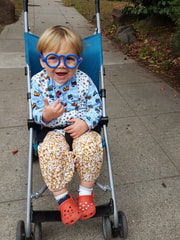 Identifying the Signs of Autism and Asperger’s Syndrome What do actors Dan Aykroyd and Daryl Hannah have in common? Both were identified with a "mild form of Autism" as young children. Both successful, but considered quirky and struggled socially. So, what is the difference in just being quirky and an actual Autism diagnosis? Recently I offered a workshop for parents and community members titled "Just Quirky or Autism?" The purpose was to raise awareness and to help in identifying the signs of Autism Spectrum Disorder. I believe that this is especially challenging yet needed for individuals with Asperger's Syndrome, now classified as Autism Spectrum Disorder-Level 1 (DSM-5, 2013) also known as "High-Functioning Autism". So many of these children and adults are misdiagnosed and misunderstood, impacting their academics, social lives and careers. So, where do we begin? First, let’s consider the term “quirky”. Merriam-Webster defines quirky as "different from the ordinary in a way that causes curiosity or suspicion". Does this describe someone you know? Before deciding, let’s look closer at High-Functioning Autism and discuss the characteristics. For consistency, we will use the term Asperger's Syndrome for the rest of this article since it is a more familiar term. Let us discuss just three factors to consider in its identification: 1. Immaturity in managing emotions Individuals with Asperger’s Syndrome have difficulty regulating their emotions and matching them appropriately to a situation. For example, their emotional response to a small situation may be very intense, such as tantruming when something falls on the floor or breaks. In girls, this may also present as separation anxiety when leaving a parent. Research reveals that those with Asperger’s Syndrome tend to be quite "black or white" emotionally or “all or nothing”. 2. Exceptional abilities in a preferred area There may be a high interest in one area, such as trains, swimming or planets for those with Asperger’s Syndrome. This interest may monopolize their thoughts and conversation. However, although cognitively intact, these individuals may struggle with attention and learning new concepts. As adults, they may be encouraged to pursue their passion in some degree as a hobby or career. 3. Sensory challenges Specific sounds, smells and tastes may be offensive to someone with Asperger's Syndrome. For example, they might avoid wearing certain clothes or eating certain foods because of the textures. Another example is covering their ears in response to or anticipation of an unpleasant sound. This sound may not be noticeable or bothersome to others, which may make their behavior seem odd. We noticed this early on in our daughter. One day at age 18 months, we noticed that she was quite fussy while riding in the backseat of the car. After several trials, we realized that she was quite irritated by the clicking sound of the fingernail clippers that I was using in the front seat. Another early example of the differences in our daughter "Amazing Grace". Research shows that most individuals with Asperger's Syndrome are identified during the early school years, as the social demands of life increase. However, many adults are now discovering the diagnosis for themselves. This is likely due to the increased visibility of Autism in the media, internet searches and/or suggestions from family and friends. Are you considering a diagnosis of Asperger's Syndrome for your child? Are you an adult considering this diagnosis for yourself? Here are a few resources: 1. Autism Speaks: Asperger's Syndrome 2. Autism Speaks: Adults References: Diagnostic and Statistical Manual of Mental Disorders (DSM-5, 2013); The Complete Guide to Asperger's Syndrome (T. Attwood, 2015); autismspeaks.org; merriam-webster.com 10/5/2017 0 Comments Elopement and AutismWondering what “elopement” and Autism have in common? Do individuals with Autism often secretly run away to get married? Alas, that is not the case.
The original definition of elope is to run away and not return to the place of origin. However, as defined by the National Institute of Elopement Prevention and Resolution (NIEPR), elopement refers to an individual with cognitive challenges or special needs who wanders, runs away from or otherwise leaves a caregiving facility or environment. Most parents of Autism are all too familiar with elopement. In my observation, no matter where on the spectrum, children with Autism tend to stray from their caregivers; some only occasionally and others quite often. Case in point: our daughter “Amazing Grace”. She was diagnosed with High Functioning Autism at age 3 ½. However, we noticed this behavior in her early on, around age two. Whenever we went to the grocery store, she would somehow find her way to the produce section and to the broccoli. She would talk about the broccoli and touch it, becoming as excited as most children are about ice cream. At age 6 ½ and despite strategies and reminders, Grace continues to stray from the safety of her family from time to time. She usually wanders to get to a preferred item or activity when she has been told to wait, such as waiting to go to the produce section to see this week’s selection of broccoli. A study in 2012 (conducted by Autism Speaks and the Interactive Autism Network) found that nearly half of children with Autism Spectrum Disorder (ASD) at some point attempt to wander or bolt from a safe place. Using parent surveys, the researchers studied over 1,100 children with ASD ages 4-11 years. They found that these children demonstrated much higher instances of wandering than their neuro-typical siblings. Why Elopement? So, what makes children with Autism wander from safety? Given the study in 2012, parenting style was not the culprit. Instead, the more a child was impacted by Autism the more instances of wandering were reported by the parent. From the parents surveyed, most remarked that their child wanders because they just like exploring and running. Others mentioned heading to a favorite place or escaping too much sensory stimulation as reasons. Help for Families As imagined, elopement causes stress and concern for parents and caregivers of those with Autism. One consideration in reducing elopement is to look at the function of the behavior. For example, if the child is wandering to escape an overly stimulating situation, they may benefit from training in self-advocacy. The child could be encouraged to use a specific gesture, word, picture card, etc. to request a break when experiencing sensory overload. Other options to assist with elopement include:
Increased community awareness and education can help tremendously in the case of elopement and individuals with Autism. Let’s do what we can to keep our kids safe! References: www.elopement.org https://www.autismspeaks.org/science/science-news/study-confirms-autism-wandering-common-scary http://www.autism-community.com/why-is-my-child-eloping-and-what-can-i-do/ http://awaare.nationalautismassociation.org/ 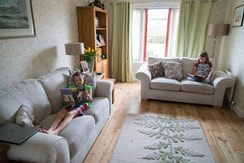 Have you ever wondered how you can help your child become a better reader? Is your young child highly interested in letters, sounds and words? My daughter was. At age 17 months, she could already identify all letters and sounds. However, she was delayed in her fine and gross motor skills and had just started walking independently. This is when my suspicion of an Autism diagnosis began. Many children with High-Functioning Autism develop reading decoding skills early, referred to as being “hyperlexic”. It was initially identified by Norman E. Silberberg and Margaret C. Silberberg (1967), who defined hyperlexia as the precocious ability to read words without prior training in learning to read, typically before the age of 5. My daughter began identifying sight words early on and was reading simple books by age 3 ½. However, she continues to struggle with making meaning from what she reads and responding to more open-ended questions about grade level text. How can you support children who struggle with reading comprehension? There are certain strategies that work and are truly beneficial for all kids as they mature as readers. Here are a few:
Let’s support our children and help to prepare them to become life-long learners. Building good reading skills is one way to do that. Feel free to contact me for more information on this topic. References: Think and Speak Successfully by C. Dunaway (2012). Photo: Lee Live-Photographer (www.ourdreamphotography.com). 8/15/2017 1 Comment Diagnosing Autism in AdultsCould an adult actually be diagnosed with Autism? With the increase in awareness, most individuals now are diagnosed with Autism Spectrum Disorder (ASD) at younger ages. However, that was not always the case. As a result, more and more adults are self-identifying behaviors and seeking information regarding an Autism diagnosis.
Behaviors typically related to Autism include: sensitivity to sensory input (touch, taste, smells), difficulty taking others’ perspective, having restricted interests, difficulty with changes to routine and challenges with conversational turn taking. Since some behaviors appear to overlap with other disorders, such as Obsessive Compulsive Disorder (OCD), some adults may have gone misdiagnosed or undiagnosed with Autism for decades. Another factor in late diagnosis is that girls are significantly less likely to be identified with ASD as compared to boys, instead being seen as “shy” or “introverted”. There are also many strengths related to Autism, including: honesty, attention to detail, high skill level in specific areas and less impacted by peer pressure. These strengths, along with great long-term memory and visual thinking skills, make adults with Autism excellent candidates for jobs in computer programming, photography, drafting, animal care, etc. Since there are no medical tests to diagnose Autism Spectrum Disorder, evaluations are typically conducted by psychologists or psychiatrists and consist of gathering systematic observations of the individual in a variety of settings. Input is also obtained from significant others, caregivers, friends, parents, etc. via questionnaires or checklists. However, the challenge is that most behavioral checklists used in assessment were designed for assessing children, not adults. Also, the parents of adults are often deceased or unable to provide quality information about early childhood behaviors– which is key to a comprehensive evaluation. Fortunately, evaluation tools are slowly being created to address the need for assessing Autism in adults. For example, in 2015 the Adult Repetitive Behavior Questionnaire (RBQ-2A) was developed to measure the extent to which adults are affected by repetitive and restricted behaviors (a core symptom of Autism). Also, some experienced child psychiatrists, pediatric neurologists, etc. may be open to working with adults suspecting Autism or can at least be a good resource for information. To learn more about Autism in adults, download the free tool kit provided by the Autism Speaks organization: https://www.autismspeaks.org/adult-tool-kit. Or, feel free to contact us for your free 30-minute consultation. References: Dr. David Beversdorf, www.autismspeaks.org, July 2014. Dr. Temple Grandin, www.iidc.indiana.edu, November 1999. K. Yandell, www.spectrumnews.org, September 2015.  Do you have fond memories of cooking with your family as a child? Or, do you remember the special dishes that your parents would make for the holidays? One of my favorites was my grandma’s lemon cake and homemade frosting. Yum! Wouldn’t it be awesome to create some of those same memories with your child? But maybe you’re thinking that you can’t because of their challenges related to an Autism diagnosis. Well, don’t let that stop you. Below is a list of just four of the benefits of cooking with your child with Autism. Happy cooking!
2. Fine Motor Skills Practice: Cutting, dicing, slicing, stirring and even pouring are all great ways to practice fine motor and self-help skills. For example, research shows that cooking provides the opportunity to use hand strength and eye-hand coordination (Colker, 2005). 3. Executive Functioning: Planning, attention and problem solving are just a few of the processes of executive functioning. These can be easily developed through cooking through tasks such as following a picture recipe, prepping ingredients, and monitoring food while it bakes in the oven. 4. Improve Variety of Food Choices: When kiddos are involved with meal prep, it helps to increase their interest in eating more of a variety of foods. My kiddo ate half of half of a blueberry waffle (pictured here), which for her is great! She has also begun drinking a few ounces of the fruit & veggie smoothies that we all make together in the mornings. I hope that you are inspired to try cooking with your child with Autism. Check out these resources for more information: The Cookbook for Children with Special Needs, by Deborah French. The Picture Cookbook: No-Cook Recipes for the Special Chef, by Joyce Dassonville. Everybody Can Cook, by Cricket Azima. Brain Balance Achievement Centers www.brainbalancecenters.com/blog. www.friendshipcircle.org. www.difflearn.com. www.education.com Cooking with Children, Bullard, 12/2010. www.thekitchn.com, J. Thompson, May 2017. Highlights magazine, www.highlights.com. 6/15/2017 0 Comments Theory of Mind (TOM) and Autism This month’s topic is perspective taking, more formally described as Theory of Mind (TOM). TOM is a core area of struggle for children and adults diagnosed with Autism Spectrum Disorder. However, research shows that those with Asperger's syndrome may be impacted with less intensity. What is Theory of Mind (TOM)? A definition of Theory of Mind is, “the ability to intuitively track what others know, think, and feel during personal interactions”. We use the information that we gather during these interactions to understand/monitor our own responses, make sense of other people’s behavior, and predict what people may do or say next. The foundations of Theory of Mind skills develop gradually from infancy and typically solidify by 6-7 years of age. Challenges with TOM Theory of Mind deficits may cause social difficulties: being sensitive to other people’s feelings, reading the listener’s interest level in our conversation, anticipating what others think of one’s own social behaviors, and understanding “unwritten” social rules. These deficits may also cause academic challenges related to comprehension of literature, understanding socially based themes in text, or interpreting directions given by the teacher. How Parents Can Help 1. Stress “thinking about others” at home. Discuss how our actions yield positive and/or negative consequences. 2. As situations occur, share your "thinking" with your child (ex: When you cleaned your space at the dinner table tonight, I felt proud of you!) 3. Help your child to deconstruct social rules by using books and social stories (ex: Social Rules for Kids by Susan Diamond and Social Stories by Carol Gray). REFERENCES Jill Kuzma SLP Social & Emotional Skill Sharing Site (2008), www.jillkuzma.wordpress.com; The Applied Psychologist-Second Edition (1999), Chapter 11, Dr. Simon Baron-Cohen, Open University Press, Buckingham/Philadelphia; Understanding Core Social Thinking Challenges: The ILAUGH Model, Michelle G. Winner, www.socialthinking.com. 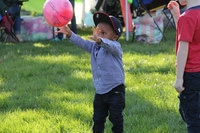 ASD Definition, Characteristics, and other factors Autism Spectrum Disorder (ASD) is a complex developmental disorder that affects each person in different ways. Autism Spectrum Disorder Characteristics The characteristics of ASD fall into three categories:
Diagnosing Autism Spectrum Disorder
Considerations and Recommendations
Adapted from the American Psychiatric Association (2016) and the National Institute of Child Health and Human Development. |
AuthorCrystal Sanford, M.Ed., M.A. CCC-SLP, ASDCS is an Educational Consultant, IEP & Autism Advocate and Speech-Language Pathologist. She is also the host of inspiring podcasts, Thriving Special Families and Thriving Autism Families! Her passion is advocating STRONG alongside fellow Autism and other fellow parents of neurodiverse children, helping them to persistently pursue what their children deserve at school. In her free time, she enjoys gardening and spending time with her husband and two children in San Diego, CA. Archives
November 2023
CategoriesAll Amazing Grace Autism Info IEP Advocacy SAC Company Info Thriving Special Families Tips And Strategies |
Photos from Ivan Radic (CC BY 2.0), Ben Taylor55, Oregon State University, C. VanHook (vanhookc), Rod Waddington, bobobahmat, Ivan Radic, marcoverch, Szhlopp, quinn.anya, bennylin0724, Gamma Man, Lorie Shaull, vhines200, davidstewartgets, truewonder, wuestenigel, ecosistema urbano, Phil Scoville, Our Dream Photography (Personal), Alexander king79, Dick Thomas Johnson
